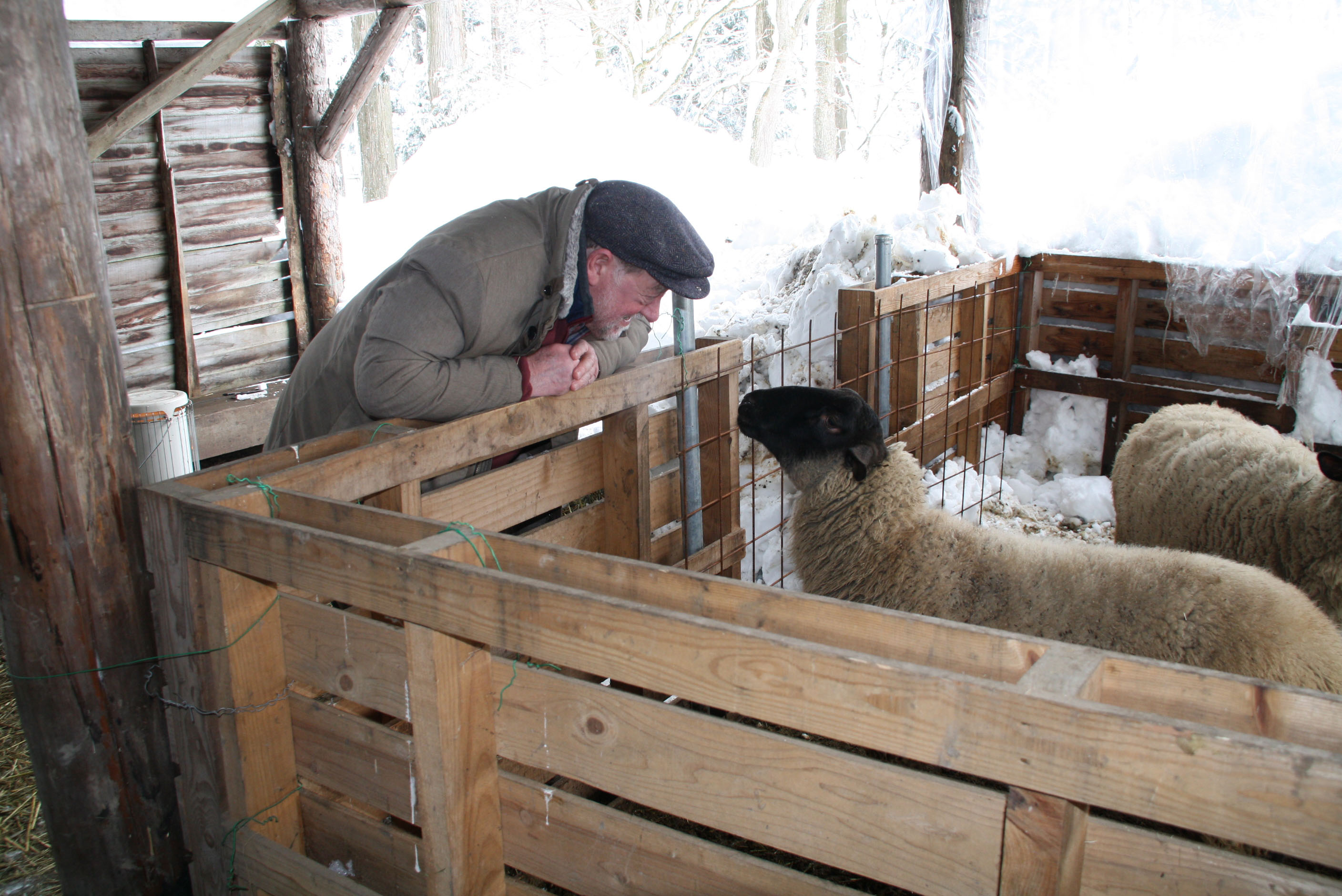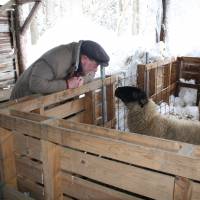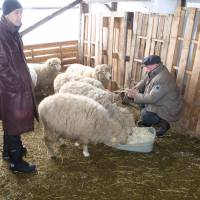I had been a long time away from my native Wales — in the Arctic, in Ethiopia and in Japan, where my books were beginning to sell and I was even being paid to appear in television adverts drinking whisky (not "whiskey," but Scotch), munching ham and wearing boots.
Before the economic bubble burst in the early 1990s, magazines and TV stations in Japan also wanted programs and articles from all over the world, and I'd happily take their people here or there if asked — so long as they didn't expect me to swan around in big cities. What always puzzled me though was how, when we were in Britain, they were forever stopping our vehicle to take photographs or videos of sheep. To me, someone who was born and raised with those woolly ruminants all around, a sheep would barely rate a glance unless some great ugly Welshman in Wellington boots was chasing it around and terrifying the poor creature — but we won't go into that.
As a child, the sight of lambs frolicking was always a delight, and during the summer holidays when I was in my early teens I'd always be helping the shepherds and their amazing dogs round up sheep that had been grazing in the hills and bring them down for shearing and dipping.
Then as I got stronger thanks to judo, kayaking and weight training, I was given the job of grabbing them out of the pens they'd been driven into, wrestling them onto their bottoms and lugging the poor bemused animals to the shearer. Some of the big rams were a major handful, but I just imagined they were a lot of rowdy rugger types and got stuck in.
The best part was the end of those long summer evenings, with the farm kitchen's table piled with fabulous food that we'd wash down with mugs of golden, bubbling home-brewed cider from a barrel brought up from the cellar. A couple of pints and I'd be singing my heart out along with the rest of the lads.
In the 1940s and '50s, mutton and lamb was the meat we ate most at home, with pork and beef coming next, chicken just rarely — and rabbit whenever I could shoot or snare one.
When I first arrived in Tokyo in the early '60s, very few people ate lamb or mutton. However, a place close by the station in Shibuya served "Genghis Khan" mutton, grilled with garlic on an upturned round iron pot supposedly resembling a Mongol warrior's helmet. Noisy and smoky and with lots of sake and beer being drunk, it was a fun place to go — though my wife always knew I'd been there from the reek of my clothes.
During my years as a game warden in the Simien Mountains of Ethiopia from 1967 to '69, beef was rare but chickens were easily acquired from people traveling to market. I'd usually get one in exchange for an empty chianti bottle or three or four large empty cans — while small tuna-type cans were traded for eggs.
Meanwhile, for each week spent at base camp, myself and my German shepherd dog would consume either a goat or a sheep. If I slaughtered it, my "butler" Abahoy, a Coptic Christian, wouldn't eat the meat as the animal hadn't been killed in the way of his religion — though I gave him the skins, which he'd stretch and dry and sell at the market. If he did the deed, then he and his wife — and me and the dog — could all eat the meat. In those days, though, I had a strange disquiet about ordering somebody else to take a life for me. So, as much as I hated killing, I preferred to do it myself.
On our patrols, which could last 10 days, I would take both Coptic Christian and Muslim rangers, and when we passed a village I'd often buy a goat or a sheep. Everyone loved meat, and those fat-tailed sheep in the Ethiopian Highlands were the very best of eating as they grazed on wild herbs such as sage and thyme as well as grasses. However, if a Muslim killed the animal then the Christians wouldn't touch the meat, and vice versa — though they did the slaughtering in exactly the same way, just with different prayers. If I killed the animal, nobody would eat it — except me and my dog.
In contrast, apart from Hokkaido and a few upland areas elsewhere in Japan, sheep are rarely seen in this country. So when a few appeared last spring in a neighbor's field here in Kurohime in the Nagano Prefecture hills, they were a sight for sore eyes — especially when they produced some lambs — and even I stopped the car to look.
As I write, with enough snow outside to bury sheep even if they were standing on each other's shoulders, I recently got in touch with the owners, Masaru Matsuoka and his wife, Mariko, and went along for a chat and and to see their flock overwintering in a barn.
Masaru told me he lived in Germany as a child, and it was then that some sheep in a nearby pasture became the "home of his heart" — so much so that a few years ago he visited France, Switzerland, Germany, Greece, Malta, Cyprus and Israel to see their ancient shepherding traditions for himself. Mariko, meanwhile, first took a liking to them while at university in New Zealand, where there are currently more than 30 million sheep — and only around 4.5 million people.
The Matsuokas told me they have a dream to have a "sheep cafe" here in Kurohime, where visitors can sip tea or coffee while contemplating the quiet scene of sheep in their pasture. Right now, their 11-strong flock, including two rams, comprises both black-faced Suffolks (think Shaun the Sheep from the British animated TV series) and shaggier and quieter Corriedales, one of the earliest crossbreeds developed in Australia and New Zealand more than a century ago.
When we went to see them in their winter quarters, they greeted us with lots of loud "baas." Then, as I looked into their eyes, my own memories came flooding back and I thought that I could never again bring myself to hurt a sheep. Without doubt, the old red devil is getting soft!
In the future, the Matsuokas hope to increase their flock to about 50, when they may reluctantly have to sell off some lambs for meat. Right now they just collect the wool, which Mariko spins.
Besides their cafe idea, however, I have a Polish friend here who advocates letting sheep live on ski slopes during the summer and milking them to make cheese, which would eliminate the cost of cutting the grass and other plants, and also be an attraction for tourists.
As it happens, I have a few acres of pasture and farmland that I am far too busy to work, and it occurs to me that sheep would take the job of cutting that grass in their stride as well. In fact, like a local farmer named Mr. Satoh, who kept sheep and also grew the most delicious tomatoes I had ever tasted, I could also use their conveniently sized little balls of dung as a fertilizer.
Long ago we grew pretty good tomatoes on our land, so if a bit was fenced off from the sheep and we used their droppings in the same way, we could easily do so again. Now there's a thought — and a tasty one at that. Which reminds me: Please pass the mint sauce!






